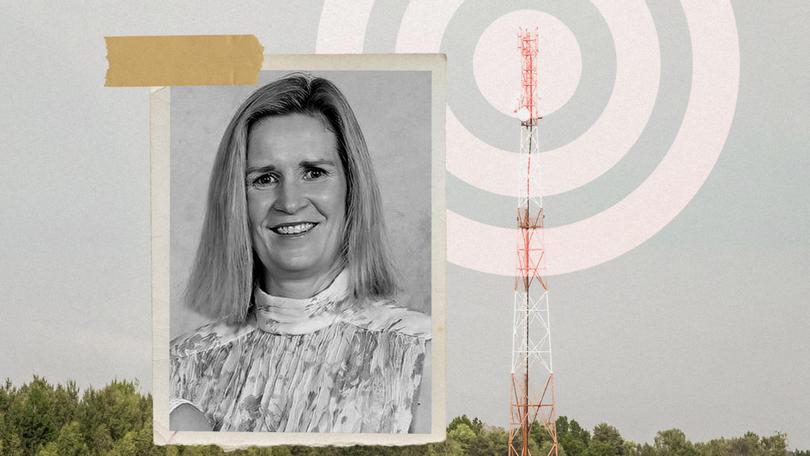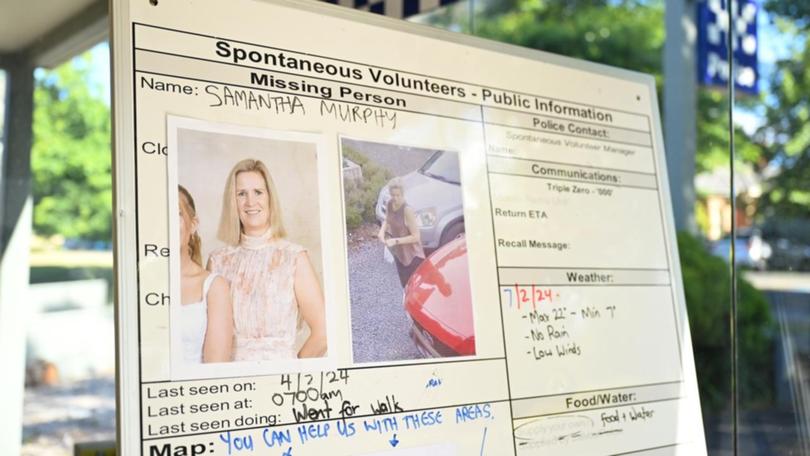Samantha Murphy: As loved ones waited for answers the telcos were asking police to pay for their help

When Victoria police announced a full month after missing mum Samantha Murphy vanished they were searching a new area based on mobile phone tower ‘pings’, it raised questions about how long it took for the data to be provided.
Senior police have told The Nightly there were also frustrations with the high cost of gathering the information from telecommunications companies, which is borne by police.
Mrs Murphy, 51, vanished on February 4 when she went for a Sunday morning run from her home in the regional Victorian city of Ballarat. Almost five weeks after her disappearance, police charged local man Patrick Orren Stephenson, 22, with her murder.
Sign up to The Nightly's newsletters.
Get the first look at the digital newspaper, curated daily stories and breaking headlines delivered to your inbox.
By continuing you agree to our Terms and Privacy Policy.The mother-of-three’s body has still not been found.
Victorian police have not commented publicly on what role mobile phone data played in the search for Mrs Murphy and the arrest of Mr Stephenson. They would not comment for this article due to the matter being before the court.
During their regular press conferences last month, investigators said they followed up more than 500 pieces of information and reviewed 12,000 hours of CCTV footage in their hunt for clues.
Metadata from Mrs Murphy’s phone showed her location 7km from home in the Mt Clear area, an hour after she left home for a 14km run, according to police updates in the early days of the search.
It was also widely reported that Mrs Murphy’s phone “pinged” off the Buninyong tower at 5pm on the day she disappeared, although this was not confirmed by police.
On Monday, March 4, a month after her disappearance, police revealed they would go through mobile data searching for phones that “pinged” from cellular towers in the Ballarat area.
Mr Stephenson was arrested two days later and charged on Thursday, March 8.
Veteran former Victorian homicide detective Charlie Bezzina said police faced financial, legal and technical barriers in their attempts to access phone data in searches such as that for Ms Murphy.
“Anything from carriers that we require in terms of information comes at a cost,” he told The Nightly.
“It’s frustrating because you then have to limit the amount of information you might be seeking because of the cost, which can reach thousands of dollars.”

He said laws should be changed for the cost of supplying data to be paid by the carriers, or a different solution should be found.
“Even going back a number of years, the police offered to give the phone companies a body (an officer to help with data requests),” he told The Nightly.
“This was rejected.
“There are jurisdictions worldwide where the federal communications minister says if it’s for law enforcement then there’s no cost of delivery.
“It is frustrating and it’s restrictive.”

Telecommunication companies charge police for the labour involved in data searches and the Telecommunication Act of 1997 says they “must comply. . .on the basis that the person neither profits from, nor bears the costs of, giving that help”.
The Australian Mobile Telecommunications Association (AMTA), which represents the carriers, said the industry takes “very seriously” its obligations “to provide reasonable assistance to law enforcement agencies”.
“Information and assistance provided by the mobile operators to law enforcement agencies is charged on a purely cost-recovery basis,” they said.
“Each operator sets its fees based on the costs for providing the specific assistance or information, and price lists are given to the law enforcement agencies. An operator may choose to adjust its prices to ensure they comply with the cost-recovery principle.”

Mr Bezzina, who before leaving the force in 2009 worked on some of Australia’s most high-profile cases including the murder in 1998 of gangster Alphonse Gangitano and the 1991 killing of heart surgeon Victor Chang, was also critical of aspects of the Murphy investigation.
“I question how long it took for the missing persons unit to become involved,” Mr Bezzina said.
“She went missing on the Sunday and they should have been on the ground on the Monday but they weren’t. So it’s likely that delayed the process of getting those phone records looked at.”
Australian police are also stymied by the speed at which they are able to access data from international tech companies such as Google, Facebook and Apple. Such requests can take years to be fulfilled.
This was highlighted by NSW State Coroner Teresa O’Sullivan in her findings following an inquest into the death of Belgian backpacker Theo Hayez, who criticised “gaps, roadblocks and inconsistencies” faced by missing persons investigators.
She recommended the NSW Law Reform Commission and the Australian Law Reform Commission review the available laws.
“Without limiting the scope of the inquiry, the reference should include examination of: (a) powers available to coronial investigators under the Coroners Act 2009 (NSW) including but not limited to: (i) the applicability and availability of existing coronial powers to obtain information from modern technology such as smart phones, computers, tablets and laptops, tele-communications data and information contained on the “The Cloud”.”
These reviews have not yet taken place.
However, Attorney General Mark Dreyfus last month signed a new data-sharing agreement that will make it easier to access information held in the US.
Victoria Police would not disclose the steps it has taken to obtain Mrs Murphy’s data from Google, Apple and Facebook.
In the early days of the investigation they said they were “actively engaged with a number of external agencies and telecommunications companies in an effort to get as much information as possible to assist the current search”.
An Optus spokesperson said: “When lives are at risk we will work as cooperatively and fast as we can to assist the police”.
A Telstra spokesperson said: “Telstra complies with its obligations under the Telecommunications Act to provide assistance where we receive a lawful request for information”.

